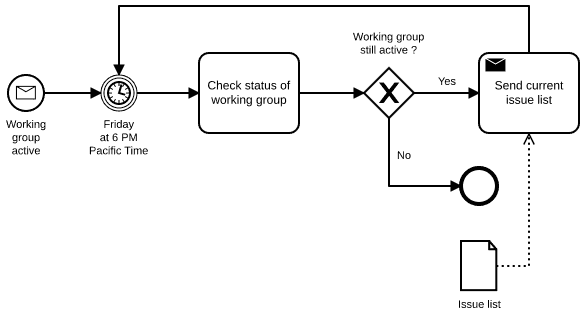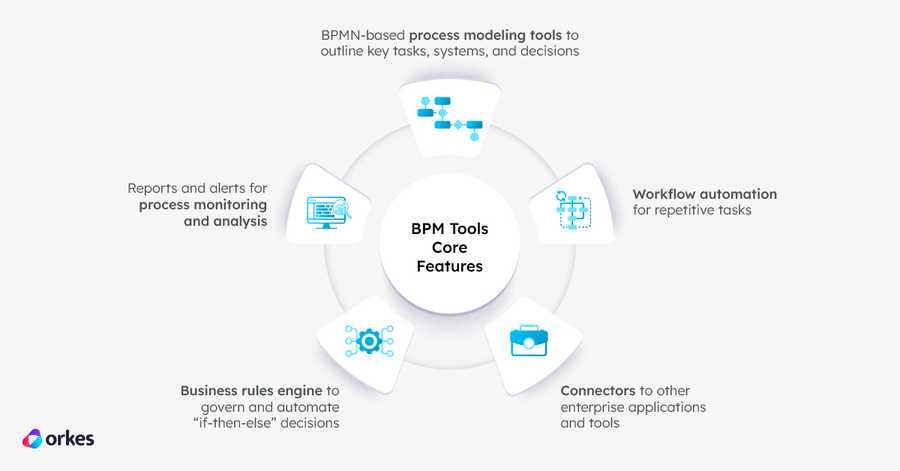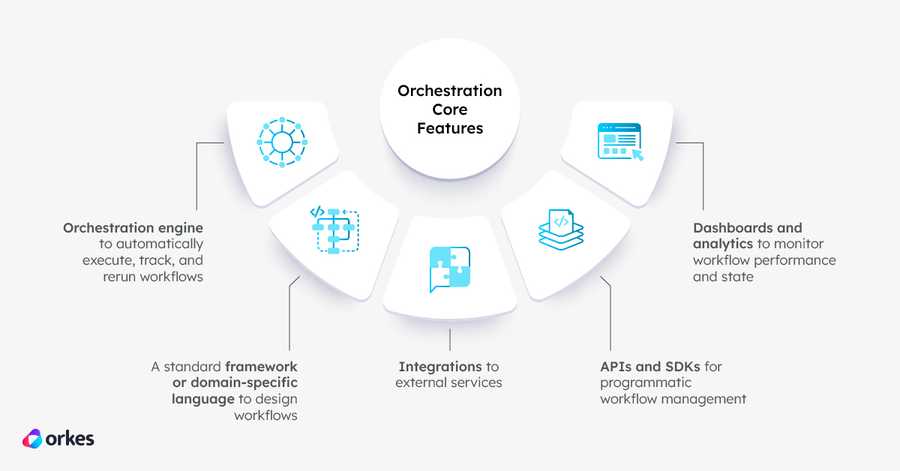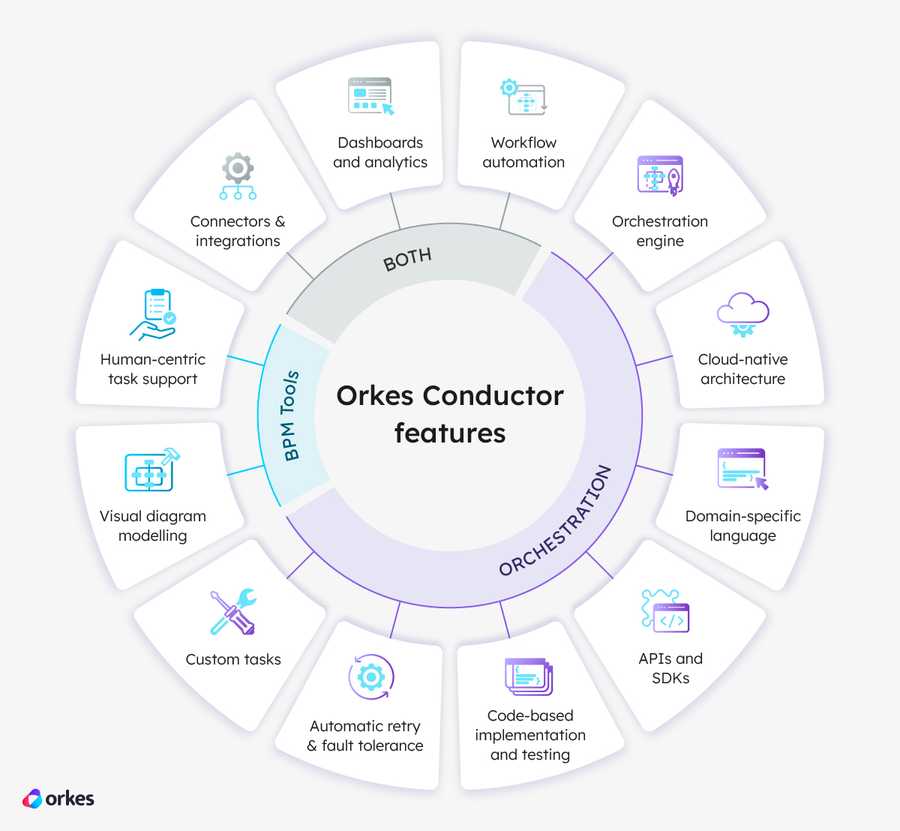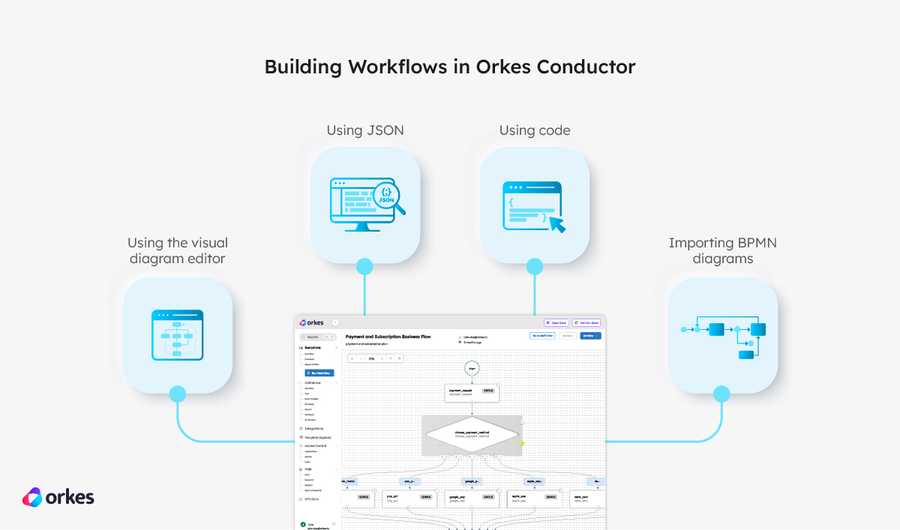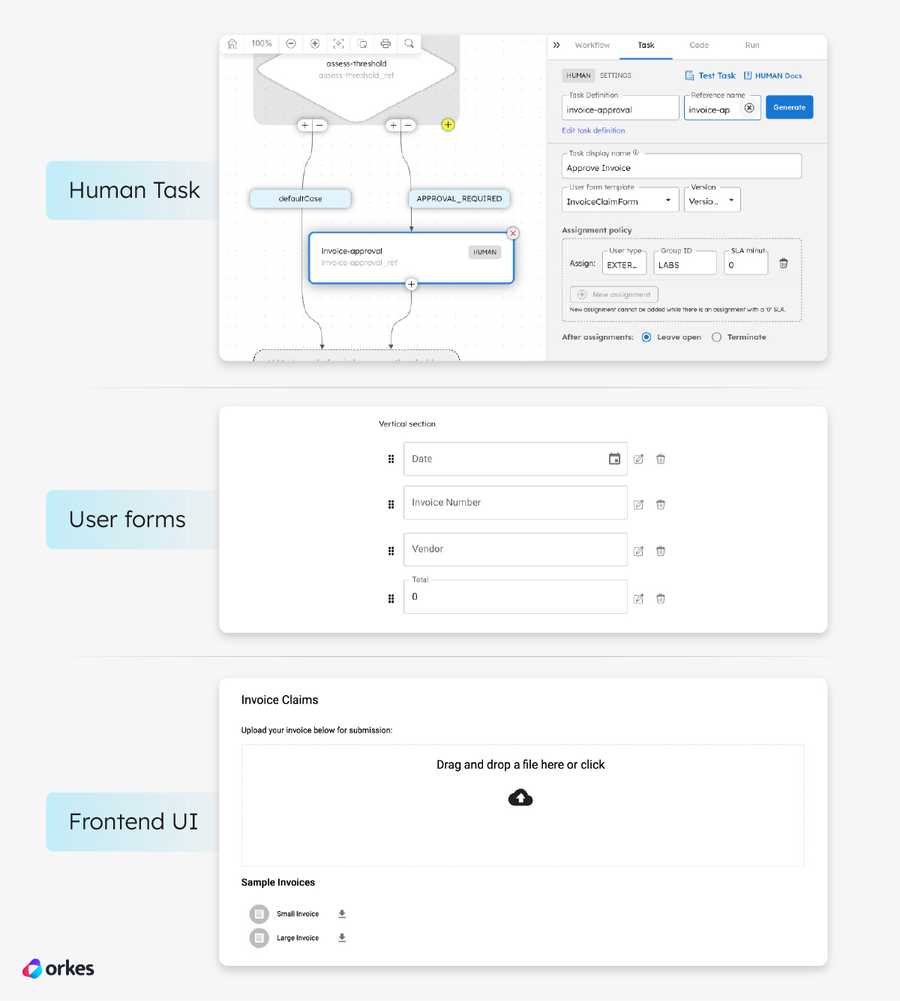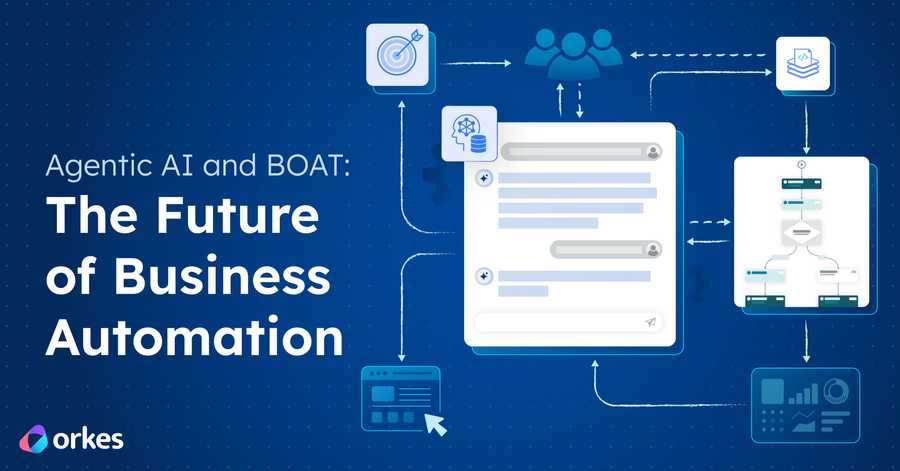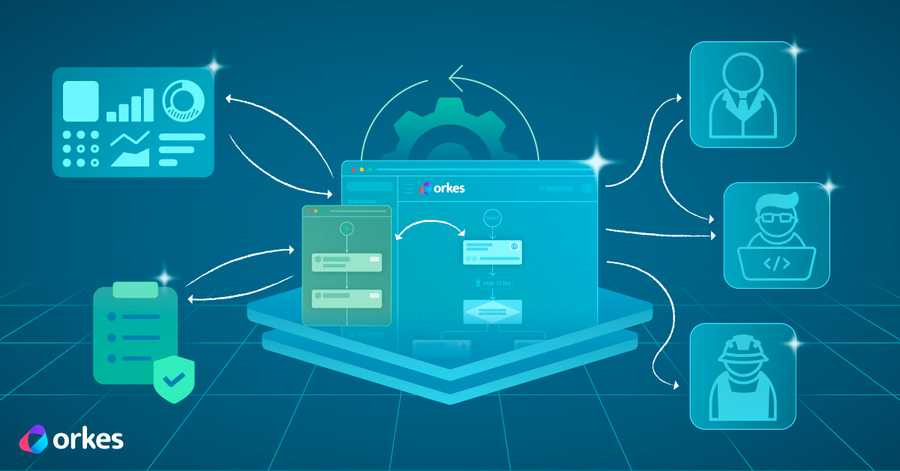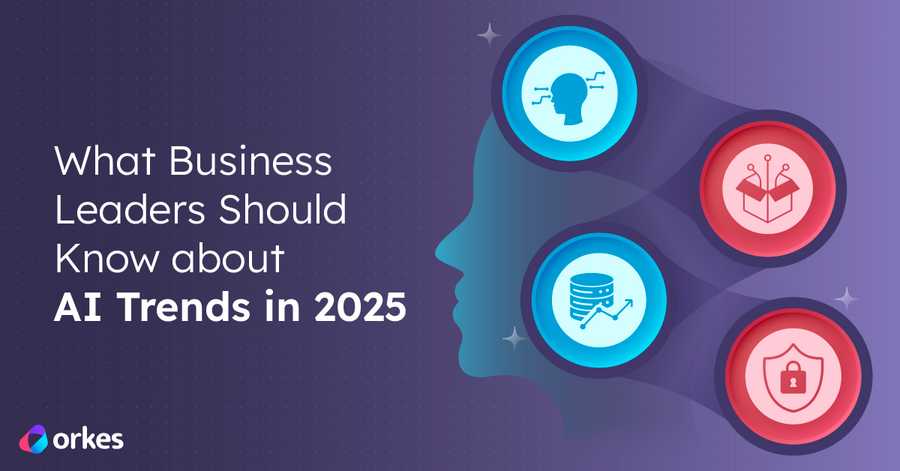BPM vs Orchestration Tools: Automating Business Processes

In today’s fast-moving digital world, businesses rely on well-designed and automated processes to remain competitive, agile, and efficient. Two key approaches to automating these processes are business process management (BPM) tools and orchestration platforms. Let’s explore these solutions for automating business processes, the role of modeling business processes, and how BPM tools compare to orchestration tools like Orkes Conductor.
Why model business processes?
A business process is a set of structured tasks or activities designed to produce a specific business outcome, such as onboarding a customer, processing an order, or handling a support ticket.
To analyze, optimize, and automate these processes, businesses must first model them clearly. Among the many methods for modeling processes, Business Process Model and Notation (BPMN) is the most widely adopted standard due to its clarity and consistency.
What is BPMN?
BPMN (Business Process Model and Notation) is a graphical notation that enables both technical and non-technical stakeholders to understand business workflows visually. BPMN diagrams comprise standardized elements like tasks, events, gateways, and flows.
BPMN diagrams can represent three main types of processes:
- Orchestration: Models how a single entity or system coordinates activities in a process.
- Choreography: Models interactions and message flows between multiple participants without a central controller.
- Collaboration: Depicts multiple processes and interactions across systems.
Benefits of BPMN
By offering a universal language for all stakeholders (business analysts, developers, and managers), BPMN enables clear, standardized documentation of business processes. Here are some of its benefits:
-
Improve communication: Bridge the gap between business and technical teams, facilitating understanding through visual diagrams. \
-
Enhance efficiency: Help identify process bottlenecks, inefficiencies, and risks early, facilitating process analysis and improvements. \
-
Foundation for automation: Provide the blueprint for executing business processes with tools like BPM software or orchestration engines.
Tools for executing business processes
Modeling is the first step; execution and automation are where the value is actualized. Two prominent methods for automating execution are:
- Business process management (BPM) tools: Low-code platforms that manage BPMN-based processes across business applications.
- Orchestration tools: Code-based execution platforms that coordinate systems, microservices, APIs, databases, AI models, and tasks at runtime based on predefined definitions.
What is business process management (BPM) software?
Business process management (BPM) software is a low-code software suite that supports designing, modeling, executing, monitoring, and optimizing business processes.
It often includes the following core features:
- BPMN-based process modeling tools to outline key tasks, systems, and decisions
- Workflow automation for repetitive tasks
- Connectors to other enterprise applications and tools
- Business rules engine to govern and automate “if-then-else” decisions
- Reports and alerts for process monitoring and analysis
Examples include Camunda, IBM BPM, Pega, and Appian.
Benefits of BPM software
BPM software makes it easy to get started with modeling and automating business processes.
-
End-to-end process management:
Covers the full process lifecycle from BPMN modeling to rule-based execution.
-
Low-code capabilities:
Empowers non-developers to participate in and design processes.
-
Compliance and auditability:
Tracks process history and execution.
Limitations
However, the ease of BPM software also comes with trade-offs like infrastructure complexity and a lack of flexibility in customizing processes. The most significant hidden barrier comes from the lack of connection between process design and process execution, which are often done with separate tools in BPM software.
-
Heavyweight infrastructure:
Can require significant resources and setup, especially when integrating with existing legacy systems.
-
Limited technical flexibility:
Tied to BPMN diagrams, preset connectors or integrations, and fixed infrastructure requirements, leading to vendor lock-in.
-
Rigid processes:
Limited features for designing dynamic or AI-driven processes, making it difficult to model and execute complex business processes.
-
Fragmentation between process design and execution:
Inability to design processes directly as runtime execution flows, leading to huge amounts of rework and translation.
What is orchestration?
Not to be confused with the BPMN process subtype, orchestration in general refers to the automated coordination of distributed tasks, services, and systems. It focuses on ensuring the right sequence of actions happens across microservices, APIs, databases, AI models, and other external systems, by tracking the execution state, retrying failed tasks, and dynamically routing tasks.
Orchestration tools like Orkes Conductor provide a lightweight, scalable, and developer-friendly way to orchestrate complex processes using open-source workflow definitions and pluggable tasks (both pre-built and custom).
It often includes the following core features:
- Orchestration engine to automatically execute, track, and rerun workflows
- A standard framework or domain-specific language to design workflows
- Integrations to external services
- APIs and SDKs for programmatic workflow management
- Dashboards and analytics to monitor workflow performance and state
Benefits of orchestration
Orchestration is geared towards modern technology stacks, with flexibility to integrate even with legacy systems. With the focus on durable and performant process execution, orchestration provides the following benefits:
-
High scalability:
Optimized for speed and performance on cloud-native architecture.
-
Flexibility:
Easily integrate with custom tasks, APIs, services, databases, AI models, and other infrastructural setups for full customization control.
-
Developer-centric:
Design workflow to immediately execute, with seamless support for workflow versioning, testing, and rapid iteration.
-
Resilience and fault tolerance:
Automatically handle errors with timeouts, retries, and fallback workflows.
-
Process visibility:
Insights into workflow state and performance, including inputs/outputs, errors, logs, metrics, and more.
Limitations
With the focus on a developer-based and technical audience, using orchestration platforms comes with the following challenges:
-
Technical expertise:
Requires developers or people with technical skills and knowledge to design and maintain workflows.
-
Less human-centric:
Typically geared for system-level automation, not human-driven workflows.
-
Limited business-facing tooling:
May lack visual modeling or business dashboards.
BPM vs orchestration tools
Here’s a breakdown of the two solutions for business process automation.
| Area | BPM software | Orchestration platforms |
|---|---|---|
| Audience | Business and technical users. | Primarily technical users (developers). |
| Focus | End-to-end process lifecycle management. | Automated service coordination and execution. |
| Architecture | Monolithic or tightly coupled with app servers. | Cloud-native, microservices-based orchestration engine. |
| Scalability | Moderate. | High (cloud-native, distributed). |
| Flexibility | Low: tied to the platform offering. | High: integrates with most systems. |
| Human involvement | Strong support. | Minimal or requires extensions. |
| Process automation | Fragmented experience across process design and implementation. | Code-first — seamless experience from process design to implementation and testing. |
Overall, the choice depends on whether you prioritize business process governance or technical automation at scale. BMP software is better suited for stakeholder communication, process documentation and analysis, and human-centric processes. On the other hand, orchestration platforms provide the performance needed for automated workloads across multiple services and high-reliability execution.
Orkes Conductor: Orchestration engine meets business process management
Built by Netflix, Conductor originally started as a leading open-source orchestration engine, ideal for cloud-native architectures. Today, Orkes Conductor is an enterprise-grade offering for a managed Conductor service, with dozens of features that cut across both BPM and orchestration tools for process automation:
-
Made for developers and business users
Conductor remains developer-friendly first and foremost to guarantee a frictionless experience from process modelling all the way to execution and deployment. Yet, unlike typical developer-first orchestration tools, Conductor comes packed with features for business users: built-in tasks, visual diagram editors, metrics dashboards, and monitoring tools. No-code, low-code, or full code—building processes with Conductor isn’t limited to deeply technical users.
-
Flexible workflow creation
Define workflows in your preferred method: using the drag-and-drop visual workflow builder, JSON specification, code, or even by importing BPMN diagrams.
-
Built-in support for human-centric workflows
Use Conductor’ pre-built Human task and user forms to automatically route the workflow to a person for human-centric tasks, like approvals and reviews. These Human tasks come with automatic assignments, duration expiry, and more for ease of management. Unlike most orchestration tools, Conductor enables users to easily embed complex human interaction at critical junctures.
-
Native execution guarantees
Conductor’s execution engine ensures that retries, timeouts, and error conditions are handled automatically at runtime. Simply define them once, customize them to each task or workflow, and let Conductor take care of the rest.
With idempotency features embedded, duplicate processes that lead to side effects (like handling the same order transaction twice) will never take place under Conductor’s watch.
-
Workflow monitoring and dashboards
Conductor provides visibility across the spectrum. You can get insights into each workflow performance on a granular level, including errors and latency, and intermediary outputs. For a high-level view, Conductor also offers aggregated metrics across workflows, including execution rate, success rate, and system health.
With Conductor, companies can achieve the flexibility of building business processes with resilience, scalability, and observability, making it a compelling alternative to traditional BPM tools for modern application architecture. Learn more about how Conductor stacks up with legacy BPM tools here.
Orkes Conductor is an enterprise-grade orchestration platform for process automation, API and microservices orchestration, agentic workflows, and more. Try building a workflow using our free Developer Playground.



